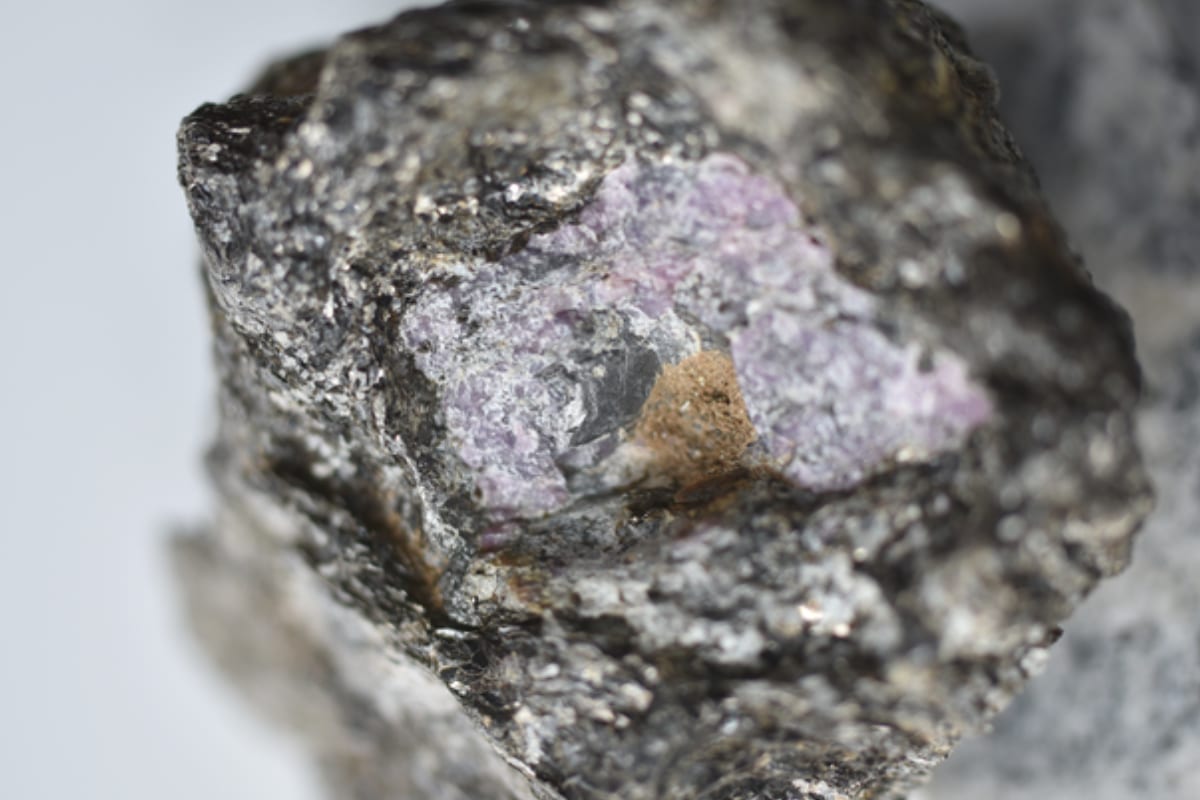
The ruby appears to contain carbon atoms that were once part of an early life form here on Earth.
To gain more insight into how rubies are formed, a research team led by Chris Yakymchuk traveled to Greenland some time ago (a logical final destination, as the world’s oldest rubies are here). And during that expedition, Yakymchuk and colleagues made a remarkable find. They stumbled upon a 2.5 billion year old ruby that harbored graphite. Graphite is a mineral that consists solely of carbon. And what makes the find so special is that an analysis of this carbon shows that it is a remnant of an organism that lived billions of years ago.
Unique
“The graphite in this ruby is truly unique,” says Yakymchuk. “It is the first time that we have discovered traces of life in ruby-containing rocks.”
Life
But how can the researchers be so sure that the carbon in these rubies was once part of a living being? We asked Yakymchuk. “We measured the carbon isotopes of the graphite,” he says. Isotopes are different forms of the same element. Carbon has two stable isotopes: a light and a heavy version. “Life forms – whether humans, dinosaurs or bacteria – prefer to use the light carbon isotopes, because they make it easier to form cells and other biological components. The graphite in the rubies was rich in light carbon isotopes, suggesting that the carbon was once part of a living organism.”
Bacteria
Although the carbon isotopes cannot reveal which organism is involved, the researchers do have ideas about this. “We have determined that the rubies are more than 2.5 billion years old,” Yakymchuk said. “The only life forms that existed on Earth at that time, as far as we know, were simple organisms such as cyanobacteria. Therefore, it is most likely that the carbon in our rubies was once part of a simple life form, such as a cyanobacterium.”
swallowed
And after those bacteria died, the carbon became part of the rubies. “Like most minerals, rubies grow very slowly by taking advantage of the ‘nutrients’ contained in a rock. As the ruby grows, it takes in those “nutrients,” but at the same time, it also grows over things that the ruby can’t use to grow. Carbon – in the form of the mineral graphite – is not a nutrient that the ruby uses to grow. So the ruby grows around these impurities. And so the carbon got trapped in the ruby.”
Much needed
While the ruby can’t really use the carbon, it’s funnily enough that the gem was born more than 2.5 billion years ago. “Rubies grow in rocks hidden deep in the earth and are subjected to intense pressure and heat,” explains Yakymchuk. “In addition, however, the ‘chemical’ conditions also have to be right. For example, rubies cannot grow at the pressure and temperature to which these rocks are exposed if those rocks had harbored too much water and oxygen. The presence of carbon changes those chemical conditions. In concrete terms, the graphite ensures that the rocks are less oxygenated and this created conditions that enabled the rubies to grow. We suspect that in the absence of graphite rubies probably would not have formed in these rocks.”
Life
And so the graphite can also help us at the last minute to find an answer to the original research question of Yakymchuk and colleagues, namely: how do rubies form? But in addition, it turns out that rubies – very surprisingly – can also tell us more about life on earth. “Remains of early life are in more places than we think,” concludes Yakymchuk.
Finally, the research can also significantly change our view of rubies and perhaps even our view of ourselves. “Our study builds on previous studies that showed that gemstones such as rubies, sapphires, diamonds, etc. contain important information about the history of the earth. The impurities in these gemstones are a huge source of information about the young earth. The next time you look at a gem in a piece of jewelry, think about everything that has happened on Earth over the past millions and billions of years; it is humbling to consider that so much time has already passed on planet earth.”
Source material:
“Some of the world’s oldest rubies linked to early life” – University of Waterloo
Image at the top of this article: University of Waterloo